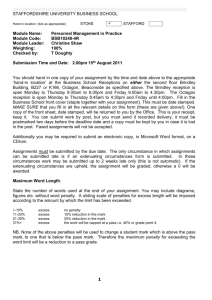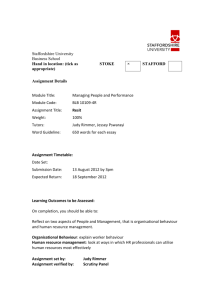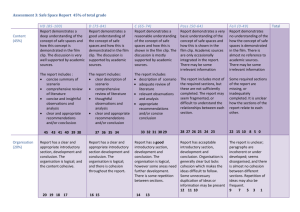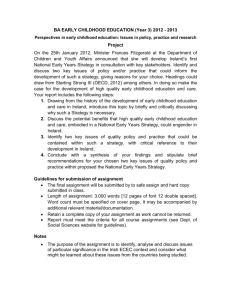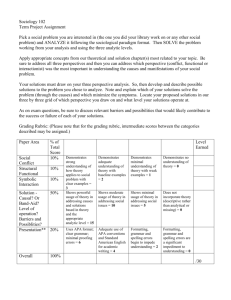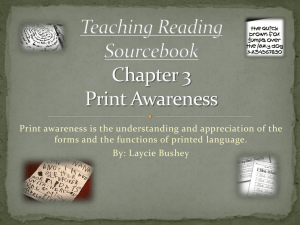Dynamics of Managing Diversity resit
advertisement
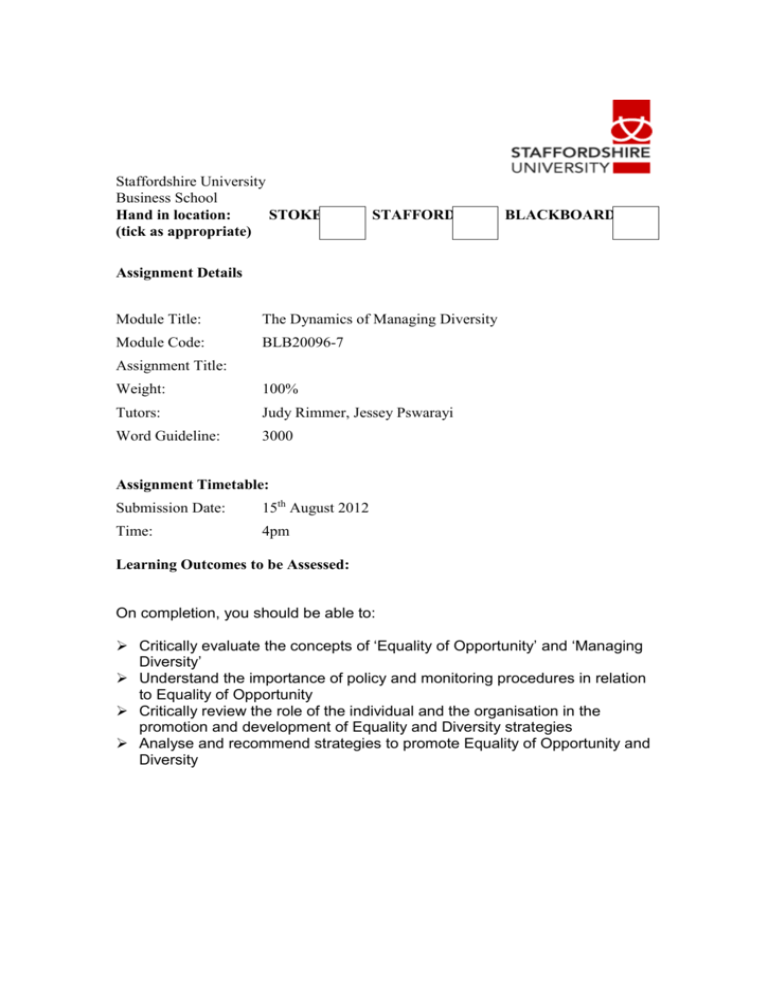
Staffordshire University Business School Hand in location: STOKE (tick as appropriate) STAFFORD BLACKBOARD Assignment Details Module Title: The Dynamics of Managing Diversity Module Code: BLB20096-7 Assignment Title: Weight: 100% Tutors: Judy Rimmer, Jessey Pswarayi Word Guideline: 3000 Assignment Timetable: Submission Date: 15th August 2012 Time: 4pm Learning Outcomes to be Assessed: On completion, you should be able to: Critically evaluate the concepts of ‘Equality of Opportunity’ and ‘Managing Diversity’ Understand the importance of policy and monitoring procedures in relation to Equality of Opportunity Critically review the role of the individual and the organisation in the promotion and development of Equality and Diversity strategies Analyse and recommend strategies to promote Equality of Opportunity and Diversity Assignment set by: Assignment verified by: Judy Rimmer Scrutiny Panel Assessment Brief: Please note that some of the essays are in two parts and therefore might have different weighting on each part. You should complete a 3,000 word assignment which answers one of the following questions (you must choose a different question from the one you originally submitted: 1. a) It has been suggested that within organisations, certain groups of workers confront obstacles to career development that have been labelled the ‘glass ceiling’ and ‘glass cliff’. To what extent is there evidence to support the existence of these obstacles to career development? (50%) b) Evaluate the measures that organisations might put in place to tackle such discrimination and ensure that the workplace is a ‘level playing field’ for all? (50%) (Your answer should focus on one group – e.g. disability, gender, race, religion, sexual orientation, etc.) 2 a) Organisations seem reluctant to tackle the issue of bullying in the workplace. Critically assess the validity of this statement. (70%) b) Review and recommend three measures that organisations and HR managers might take to try and prevent and reduce the problem of workplace bullying. (30%) 3. a) With reference to the Liberal and Radical perspectives, critically evaluate the differences between equal opportunities and diversity management as approaches to equality of employees in organisations? (50%) b) How might these differences be reflected in practice in the workplace (25%) (c) Why is ‘diversity’ such a key issue for contemporary organizations? (25%) 4. “Ascribed or perceived and achieved identities impact on the employment opportunities available to minority groups”. Critically evaluate this statement on social identity and recommend ways in which the situation of minority groups in the workplace might be improved. (100%) (Your answer should focus on one group – e.g. disability, gender, race, religion, sexual orientation, etc.) Academic Misconduct The Business School takes any cases of academic misconduct, including plagiarism very seriously. The penalties are severe and can in some cases result in a student not being allowed to continue their studies. The policy on Academic misconduct can be found at: http://www.staffs.ac.uk/assets/academic_misconduct_tcm44-26770.pdf You should hand in one copy of your assignment by the time and date above to the appropriate ‘hand-in location’ at the Business School Receptions on either the second floor Brindley Building, B227 or K166, Octagon, Beaconside as specified above. The Brindley reception is open Monday to Thursday 9.00am to 6.00pm and Friday 9.00am to 4.30pm. The Octagon reception is open Monday to Thursday 8:45am to 4:30pm and Friday until 4:00pm. Fill in the Business School front cover (staple together with your assignment). This must be date stamped. MAKE SURE that you fill in all the relevant details on this form (these are given above!). One copy of the front sheet, date stamped, will be returned to you by the Office. This is your receipt, keep it. You can submit work by post, but you must send it recorded delivery, it must be postmarked two days before the deadline date and a copy must be kept by you in case it is lost in the post. Faxed assignments will not be accepted. If you fail to submit any assessment for a module you will be given a Grade Point N (Fail due to non-submission) for that module and you will no longer have a guaranteed re-sit entitlement. Any further attempt entitlement will be at the discretion of the Award Board. Assignments must be submitted by the due date. The only circumstance in which assignments can be submitted late is if an extenuating circumstances form is submitted. In these circumstances work may be submitted up to 2 weeks late only (this is not automatic). If the extenuating circumstances are upheld, the assignment will be graded, otherwise a 0 will be awarded. Maximum Word Length: 3000 State the number of words used on the assignment front sheet. You may include diagrams, figures etc. without word penalty. A sliding scale of penalties for excess length will be imposed according to the amount by which the limit has been exceeded. 1-10% excess no penalty 11-20% excess 10% reduction in the mark 21-30% excess 20% reduction in the mark 31%+ excess the work will be capped at a pass i.e. 50% or grade point 4. NB. None of the above penalties will be used to change your mark which is above the pass mark, to one that is below the pass mark. Therefore the maximum penalty for exceeding the word limit will be a reduction to a pass grade. Assessment Criteria: Class 1 Grade Point 15 % 77+ Criteria Demonstrates a high degree of perception and originality. Is factually faultless and comprehensive in coverage of the salient points. Shows complete comprehension of material and exceptional insight in interpretation/analysis/evaluation. Evidence of extensive appropriate wider reading and independent research. Arguments supported by examples/evidence/case law. Structure/grammar/referencing outstanding. 14 74-76 Demonstrates perception and originality. Factually sound and comprehensive in coverage of salient points. Shows considerable understanding of relevant material. Outstanding interpretation/analysis/evaluation. Evidence of considerable wider reading and independent research. Relevant use of examples. Structure/grammar/referencing outstanding. 13 70-73 Demonstrates some perception and originality. Is factually sound and covers most salient points. Shows a high level of understanding of relevant material with excellent interpretation/analysis/evaluation of the material. Evidence of considerable wider reading and independent research. Relevant use of examples/evidence/case law. Structure/grammar/referencing outstanding. 2.1 12 67-69 11 63-66 10 60-62 Class 2.2 Grade Point 9 % 57-59 A comprehensive answer but with limited insight or originality. Demonstrates a firm understanding of the material with no significant errors or inaccuracies. Interpretation/analysis/evaluation very good. Relevant use of examples Evidence of appropriate wider reading and independent research. Structure/grammar/referencing of a high standard. A good answer but with little evidence of insight or originality. Demonstrates a firm understanding of the material with few errors, inaccuracies or omissions. Interpretation/analysis/evaluation good. Relevant use of examples. Evidence of appropriate wider reading and independent research. Structure/grammar/referencing of a high standard. A good answer but with very little evidence of insight or originality. Demonstrates understanding of the material but may have some errors, inaccuracies or omissions. Interpretation/analysis/evaluation generally good. Use of examples reasonable. Evidence of appropriate wider reading and independent research. Structure/grammar/referencing of a good standard. Criteria A competent answer but with no evidence of insight or originality. Demonstrates satisfactory understanding of the material but with some errors, inaccuracies or omissions. Interpretation/analysis/evaluation present but not highly developed. Some use of appropriate examples. Reliance on lecture notes evident. Limited evidence of reading beyond basic module texts. Structure/grammar/referencing of a moderate standard. 8 3 Compe nsatabl e Fail NonCompe nsatabl e Fail 53-56 A competent answer demonstrating satisfactory understanding of the material but with errors, inaccuracies or omissions. Interpretation/analysis/evaluation weak. Little use of appropriate examples. Significant reliance on lecture notes. Only basic texts consulted. Some statements unsubstantiated. Structure/grammar/referencing of a moderate/weak standard. 7 50-52 A competent answer demonstrating only a basic understanding. Material mostly relevant but with errors, inaccuracies and omissions. Some interpretation/analysis/evaluation but shallow and poorly substantiated. Limited use of relevant examples. Significant reliance on lecture notes. Only basic texts consulted. Structure/grammar/referencing of a moderate/weak standard. 6 47-49 Mostly relevant answer but with numerous omissions. Some factual errors and only an adequate understanding of material. Interpretation/analysis/evaluation shallow and poorly substantiated. Limited use of relevant examples. Very few basic texts consulted. Structure/grammar/referencing flawed. 5 43-46 Mostly relevant answer but with significant omissions and factual errors. Poor understanding of material. Interpretation/analysis/evaluation simplistic with little substantiation. Limited use of relevant examples. Very little evidence of reading even of basic texts. Structure/grammar/referencing flawed. 4 40-42 Some relevant material but with major omissions and inaccuracies. Limited in understanding. Interpretation/analysis/evaluation weak and unsubstantiated. Poor use of relevant examples. Very little evidence of any reading. Structure/grammar/referencing poor. 3 30-39 Answer has some relevance but with major omissions and/or inaccuracies. Demonstrates some/partial understanding but lacks material to answer the question. Interpretative/analytical/evaluative skills very weak. No evidence of reading at an appropriate level. Structure/grammar/referencing poor. Poor use of examples. 2 20-29 Largely irrelevant. Only partial understanding of the question. Very weak interpretative/analytical/evaluative skills. Lacking in material to answer the question. Considerable errors and inaccuracies. Structure/grammar/referencing very poor. Very poor or non-existent use of examples. 1 1-19 Almost totally irrelevant. The bulk of the answer is a misunderstanding of the question. Extremely limited interpretative/analytical/evaluative skills. Unacceptably brief/or unacceptably verbose. Mostly inaccurate and erroneous. Structure/grammar/referencing very poor.
